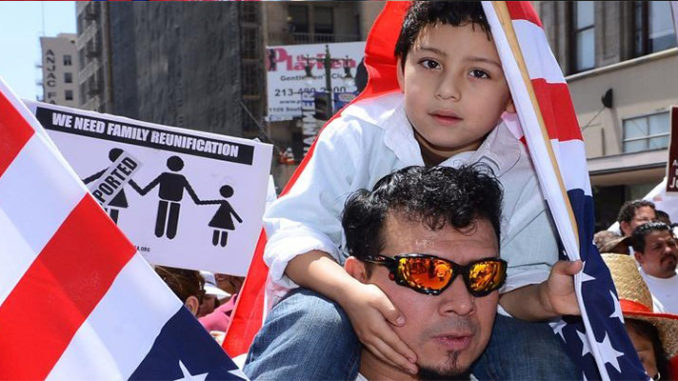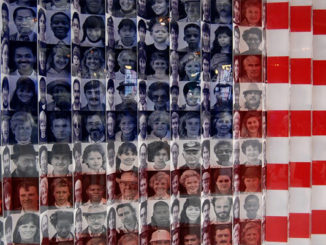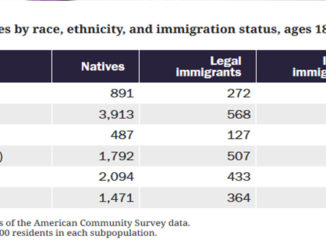
Will the Congress manage to come up with an immigration deal that President Trump will sign? That is the question on everyone’s minds as negotiators in Congress work towards a deal that could avert a second government shutdown and/or result in an unprecedented presidential declaration of national emergency.
Bipartisan deals on immigration have eluded lawmakers and presidents for three decades. The last big immigration bill was passed in 1986 when Ronald Reagan was president and both houses of Congress were held by Democrats. A smaller bill was passed in 1990 when George H.W. Bush was president and both houses of Congress were still controlled by Democrats.
During George W. Bush’s presidency the push for bipartisan immigration reform was defeated by a conservative revolt against amnesty for unauthorized immigrants. In 2013 another bipartisan effort failed, with the bill passing the Senate but never coming up for a vote in the House. Since then polarization around the issue has only increased—a phenomenon not limited to the United States but also echoed in developed countries around the world. Last year’s immigration agenda in Congress illustrates the difficulty. Three immigration bills went to the House floor following a discharge petition threat by moderate Republicans advocating to resolve the status of DACA recipients. Two were straightforward fixes for DACA (one from each party). The third was a sweeping, hard-line overhaul of the immigration system sponsored by Bob Goodlatte (R-Va.) that lacked anything to entice Democrats. None of these three bills passed the House.
So what happened between 1986 and now?
The simple explanation is to chalk it all up to Donald Trump’s xenophobia. But while Trump stoked these tendencies, they are not new to America—they have increasingly influenced immigration policy, but they are not reflective of the public’s attitudes. If anything, the country has grown more, not less, tolerant of immigrants over time. When Gallup asked Americans in 1986 if “immigration should be kept at its present level, increased or decreased?” 49 percent of Americans said it should be decreased. When the same question was asked in June 2018 only 29 percent said it should be decreased.
If fewer people were supportive of immigration in 1986, why could a Republican president and a Democratic Congress give amnesty to millions of unauthorized immigrants? In November 1986 President Reagan signed The Immigration Reform and Control Act into law. The Senate voted for the conference bill 63-24 and the House voted for it 238-173. The 1986 bill made it unlawful for an employer to knowingly hire undocumented aliens and established a verification and enforcement system. It also granted temporary legal status to people who had entered the United States without permission before 1982 and who had been in the country continuously since. Under that law, those individuals could eventually gain permanent resident status, green card status, and citizenship. The bill drew opposition from both the left and the right—right-wingers objected to what they called “the blanket amnesty” in the bill, and left-wingers and pro-immigrant groups called the requirement that immigrants live in the country ten years before becoming legal “tantamount to establishing serfdom.”
The 1986 bill passed because, while there was opposition to immigration, there was also a powerful center anchored by the business community, which lobbied for the bill to ensure a flow of low-wage workers into the country. The center, in 1986, could balance out the intensity on either the left or the right that we see today. Immigration was not a major issue in the 1988 presidential election and only in some congressional elections.
By 2007, the economic and political landscape on the issue had changed. A Republican president, George W. Bush, and a Democratic Speaker of the House, Nancy Pelosi, worked together to forge a comprehensive immigration bill. But the combined bipartisan political clout of the president and speaker was not enough to overcome the new, polarized politics of immigration. While the bill was introduced, it never even came up for a vote. By 2007 both parties had to confront the reality they live with today: immigration has become intricately bound up with issues of identity, prone to the politics of tribalism and of less interest to the business community.
In the years between 1986 and 2007, the center has collapsed. A combination of disparate economic forces, such as new trade deals and low-cost containerized shipping, has decreased the stake the business community traditionally had in immigration policy. Today, it is easier for businesses to relocate to where labor is cheap than it is to hire cheap labor in the United States. These underlying economic transformations are carefully laid out by Professor Margaret E. Peters in her book Trading Barriers: Immigration and the Remaking of Globalization. In it, she shows how the business community has, over time, lost interest in the immigration debate. She demonstrates that the causal chain is as follows: “(1) increase in trade openness, firm mobility and technology adaptation should (2) decrease firms’ support for open immigration, which then, (3) reduces the support that policymakers receive for immigration, which (4) leads them to restrict low-skill immigration.”[1]
By measuring the number of businesses who testify before Congress on immigration issues, Peters shows that over time the business community has lost interest in immigration reform—leaving the field open to nativist groups. “The data, then, suggest that less support for open low-skill immigration from firms and their trade associations has resulted in nativist groups having comparably, but not absolutely, more influence over immigration policy, leading to more restrictions.”[2]
As our colleague William Galston writes in his book Anti-pluralism: the populist threat to liberal democracy: “When economic times are good and citizens feel personally secure, tribal sentiments remain muted: there are no urgent problems for which the Other need be blamed. But either a sharp downturn or a pressing security threat can activate these sentiments. When both occur simultaneously, tribalism surges.”[3]
In 33 years, the country has gone from the ability to forge a bipartisan consensus on immigration to a state of gridlock. Even if a small deal is reached sufficient to let both sides keep the government open, the days of major legislation show no sign of returning.
[1] Peters, p.69.
[2] Ibid., p.90
[3] Ibid., p.77
Elaine C. Kamarck is a Senior Fellow in the Governance Studies program as well as the Director of the Center for Effective Public Management at the Brookings Institution.



